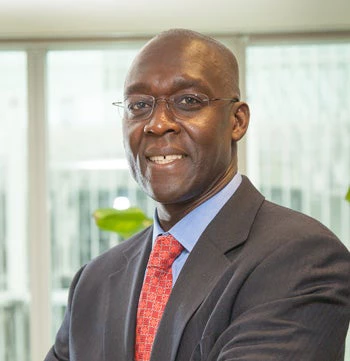 Central train station in Köln : Photo credit: pixel2013, Pixabay
Central train station in Köln : Photo credit: pixel2013, Pixabay
The original version of this piece was published by OMFIF – the Official Monetary and Financial Institutions Forum – an independent think tank for central banking, economic policy and public investment.
The World Bank has collected data tracking infrastructure projects in developing countries for the first half of 2020. While results are not surprising, they are alarming: private sector investment dropped by an unprecedent 56% from the same period in 2019.
Like many other sectors, infrastructure was brought to a near standstill by COVID-19. However, the private sector's retreat jeopardizes recovery and the ability to build back better once the pandemic is under control. And while the decline is a major concern for governments, it should also worry the private sector, which has been looking for ways to find better yields in this low-rate environment.
At the start of the pandemic, infrastructure investors were holding back because of delays or cancellations in existing projects due to supply chain disruptions, travel and shipping restrictions and other pandemic-related obstacles. Decreased demand or forced renegotiations also prevented or delayed many projects. At the same time, governments rightly redirected funds to healthcare and social protection sectors.
It is understandable that private sponsors and financers are reluctant to invest in the infrastructure sector, where returns on investment often demand long-term commitments. The pandemic's fallout has caused concerns about credit quality, borrowers' liquidity, and counterparties' financial robustness, especially in developing countries.
Yet we need good infrastructure more than ever. Digital connectivity, strong logistics systems and municipal solid waste management are crucial to fighting the pandemic. More traditional infrastructure sectors such as energy and transport are essential to ensure supplies and vaccines are delivered to their intended recipients. Longer-term concerns, such as rapid urbanization and climate change, loom prominently on the horizon.
Big-ticket infrastructure spending is no easy feat as governments are more fiscally constrained than ever in facing this crisis. Many were already experiencing debt crises before the pandemic hit. But while infrastructure is still a primarily public-sector endeavor—with an estimated 87% to 91% of spending coming from the public—many stakeholders, including the World Bank, have called for scaling up private sector participation when it can be done logically and responsibly. The aim is to free up scarce resources for spending that can only be taken on by the public sector.
The good news is that there are many ways to mitigate increased risk and promote investment if we work together. Three key findings in the World Bank's private sector infrastructure investment trends can help us navigate the terrain.
First, private-sector infrastructure commitments in the world's poorest countries were less impacted for the first half of 2020. At $2.4 billion, investments in these countries are above the five-year average for this period. Our data shows that development and export finance institutions played a critical role here; an overwhelming majority of projects in the poorest countries received some form of support from these institutions. This tells us that many institutions are already playing the right role at the right time, but they need to scale up.
Second, renewable energy continues to be a significant part of new energy generation projects, accounting for 67% of the sector's investment in the data we tracked. This tells us that the private sector is already mostly on board with the decarbonization agenda.
Finally, institutional investors had a relatively large role in private investment in infrastructure at the beginning of 2020, contributing 28% of total investment. This is notable because their role has been negligible up to now, with less than 1% of total infrastructure investment in developing countries.
There have been clear indications that institutional investors would like to be more active in this space and the potential is enormous. According to Swiss Re, long-term investors have $80 trillion–$85 trillion under management that could be used for infrastructure projects in developing countries under the right conditions.
What do they need to get there? In our dialogues, top on the wish lists of developing countries are robust legal frameworks, regulatory certainty, asset class standardization, standard definitions for environmental, social and governance considerations and resilience indicators.
The reality is that governments, investors, development actors and other stakeholders see the significant upside to getting this right and have already been making substantial progress on all these fronts. There is a unity of purpose that will go far to ensure that current and future infrastructure development is sustainable, meets citizens' needs and gets us closer to our sustainable development and climate goals.
What we need now is an acceleration of these efforts to capture this unprecedented moment of need and opportunity. Just as we've fast-tracked the COVID-19 medical response, vaccine development and economic aid packages, we must fast-track the building blocks of sustainable infrastructure investment. The economic and social impact will reach decades into the future, and the climate impact will be pivotal.
Makhtar Diop was the World Bank’s Vice President for Infrastructure when this article was written. On March 1, 2020, he starts his new position as Managing Director and Executive Vice President of the International Finance Corporation, the private sector arm of the World Bank Group.
Related Posts
The developing world is crying out for greater private investment in sustainable infrastructure
Bouncing back is not enough. Let’s bounce forward to infrastructure resilience
2019 brought private investment in infrastructure to more countries: Is there a message for policymakers amid COVID-19?
COVID-19 and infrastructure: A very tricky opportunity
Who finances infrastructure, really? Disentangling public and private contributions
Subtle but significant changes to private infrastructure investment in first half of 2018


Join the Conversation